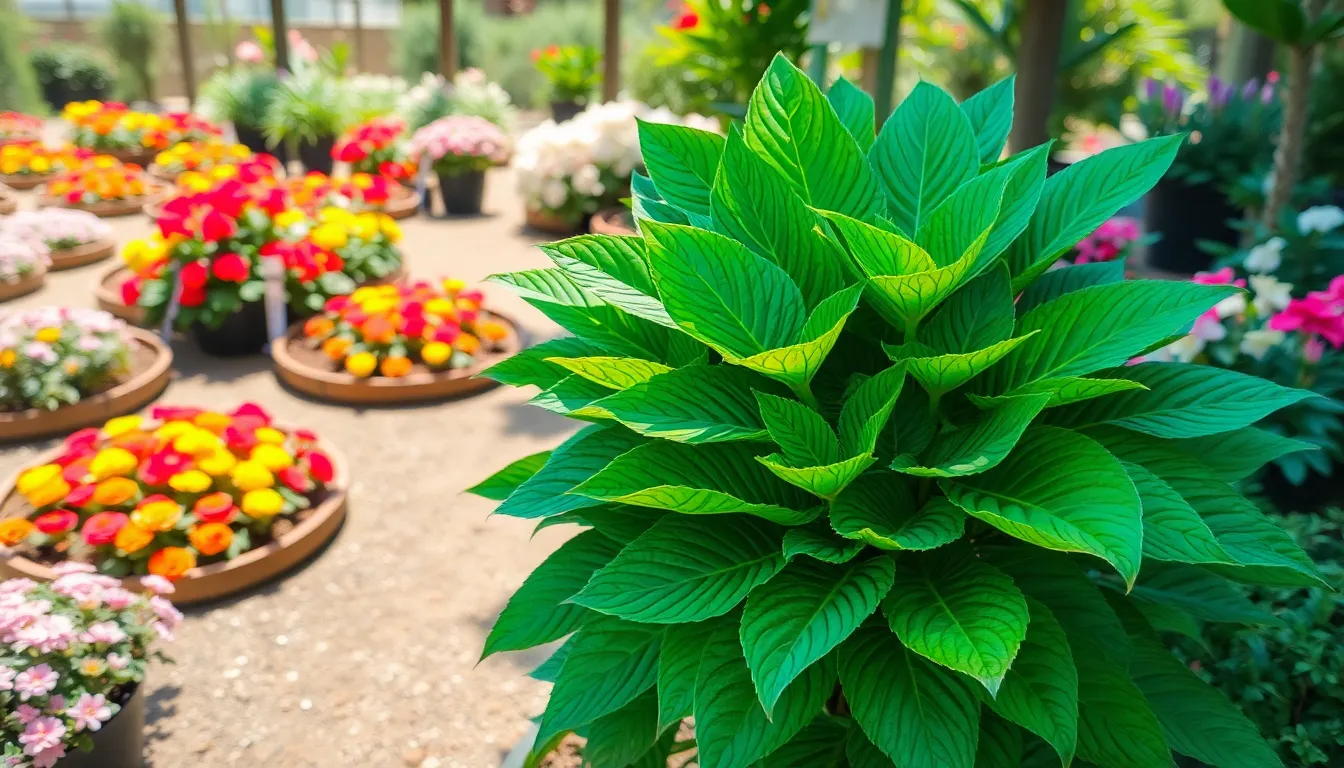Table of Contents
ToggleIn the quirky world of botany, potosterums steal the show, and not just because they have a name that sounds like a superhero’s sidekick. These fascinating plants are the unsung heroes of gardens everywhere, bringing a unique flair and a touch of whimsy to any green space. If you’ve ever wanted to impress your friends with your knowledge of rare flora, potosterums are your ticket to botanical fame.
Imagine a plant that not only looks stunning but also thrives on neglect—yes, potosterums are the low-maintenance wonders of the plant kingdom. Perfect for those who love nature but can’t keep a cactus alive, these beauties are here to save the day. Dive into the vibrant world of potosterums and discover why they deserve a spot in every garden enthusiast’s heart.
Overview of Potosterums
Potosterums represent a category of unique, low-maintenance plants that enhance garden aesthetics. Their charm lies in their easy care, appealing to both novice and seasoned plant enthusiasts.
Definition and Classification
Potosterums belong to the family of plants known for their adaptability and resilience. Characterized by vibrant foliage and varied sizes, they thrive in diverse environments. Common species include Potostera maxima and Potostera nana, each offering distinct visual appeal. These plants often feature unique leaf patterns that attract attention. Many enthusiasts appreciate their ability to tolerate neglect while maintaining their beauty.
Historical Context
Potosterums emerged from tropical regions, where they evolved to withstand varying climatic conditions. Initial cultivation began in the mid-20th century as horticulturists recognized their ornamental value. Over the years, they gained popularity for their minimal care requirements. During this period, they became a staple in many households and public gardens. Their versatility made them a favorite among landscape designers. As interest in sustainable gardening grew, so did the appreciation for potosterums.
Characteristics of Potosterums

Potosterums exhibit fascinating characteristics that contribute to their appeal. These traits encompass their physical attributes and behaviors, making them stand out in various environments.
Physical Traits
Potosterums display vibrant foliage, showcasing a range of colors from deep greens to bright variegated patterns. Leaf shapes vary significantly, from broad and rounded to slender and elongated, depending on the species, such as Potostera maxima and Potostera nana. Size also differs, with some growing up to three feet tall while others remain compact. Leaf textures can be smooth or slightly textured, providing additional visual interest. Mature plants produce elongated stems that may trail or stand erect based on their growing conditions.
Behavioral Patterns
Potosterums thrive in diverse environments, adapting to both low and bright light conditions. Growth rates vary; some species may grow slowly, while others exhibit rapid growth when given optimal care. Watering preferences differ as well; these plants tolerate sporadic watering without wilting. They exhibit resilience in the face of neglect, maintaining their vibrant appearance even in challenging conditions. During their growing season, potosterums benefit from occasional fertilization, promoting healthier growth and vibrant foliage.
Habitat and Distribution
Potosterums thrive in diverse environments, making their habitat and distribution particularly interesting. These plants demonstrate a remarkable ability to adapt to varying conditions.
Natural Habitats
Natural habitats of potosterums primarily include tropical and subtropical regions. They flourish in areas with high humidity and moderate temperatures. Understory layers of dense forests provide shade, while these plants also adapt well to open spaces. Often found near water sources, potosterums benefit from the moisture level in their surroundings. Commonly, they grow in well-draining soils that retain some moisture without becoming waterlogged.
Geographic Range
Geographic range of potosterums extends beyond their native habitats. These plants are widely distributed across Southeast Asia, Africa, and South America. They often populate urban gardens, where their resilience and beauty can be showcased. In temperate zones, potosterums are prevalent as houseplants, enjoying controlled indoor climates. Various species are cultivated globally, reflecting their popularity and adaptability in different environments.
Importance of Potosterums
Potosterums hold significant value in both ecological and human contexts. Their adaptability and unique traits make them key players in various environments.
Ecological Role
Potosterums contribute to biodiversity, providing essential habitats for insects and small fauna. In tropical and subtropical ecosystems, these plants maintain soil quality through their root systems. Additionally, potosterums aid in moisture retention, enhancing humidity levels in their surrounding areas. Their foliage produces oxygen, which benefits other plant and animal life. These attributes highlight their importance in sustaining ecological balance.
Human Interaction and Impact
Humans benefit from potosterums for their ornamental beauty and ease of care. Many individuals cultivate these plants in homes and gardens, enhancing living spaces with vibrant colors. In urban areas, potosterums improve air quality by filtering pollutants. Educational programs often focus on these unique plants, teaching gardening and sustainability. Their popularity reflects a growing awareness of environmental conservation, encouraging a stronger connection between people and nature.
Conservation Status
Potosterums face significant challenges that threaten their populations and habitats.
Threats to Potosterums
Habitat destruction poses a major risk, as urbanization and deforestation reduce available environments. Invasive species also disrupt local ecosystems, outcompeting potosterums for resources. Climate change affects their growth through altered rainfall patterns and temperature fluctuations. Over-collection for ornamental purposes further diminishes their numbers in the wild. Social practices that prioritize agricultural expansion over conservation intensify these threats, making it crucial to address these issues for potosterums’ survival.
Conservation Efforts
Conservation organizations actively work to protect potosterums and their ecosystems. Initiatives focus on habitat restoration, which enhances natural environments where these plants thrive. Educating communities encourages sustainable practices, helping to reduce the impact of urbanization. Some programs emphasize the cultivation of potosterums in home gardens, promoting biodiversity at a local level. Partnerships with local governments facilitate the enforcement of protective legislation, ensuring potosterums receive the care and attention necessary for their survival.
Potosterums stand out as remarkable plants that blend beauty with resilience. Their low-maintenance nature makes them perfect for both novice and seasoned gardeners looking to enhance their spaces. As they continue to gain popularity, potosterums not only enrich gardens but also play a vital role in promoting biodiversity and sustainability.
The ongoing efforts to conserve these unique plants highlight their ecological importance and the need for responsible gardening practices. By embracing potosterums, individuals can contribute to a greener future while enjoying the charm they bring to any environment.




